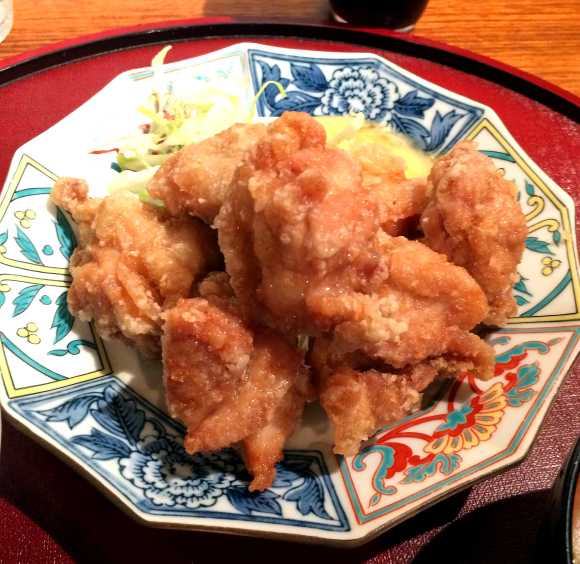
Let it never again be said that America is the only country that has an unhealthy relationship with fried foods.
While you may not find such cynically, blatantly unhealthy fare as fried butter and fried Oreos here in Japan, you will find that many square meals consumed in Japan are going to come with some kind of fried food. A lot of times the default is karaage, a dish that is basically the Japanese analogue to American fried chicken, and an item that Japanophiles the world over desperately, vainly argue is somehow healthier than American fried chicken by virtue of its, uh… Japanese-ness or something?
The truth is, karaage is every bit as unhealthy as fried chicken from anywhere else and the Japanese are just as prone to gorging on it to the point of discomfort. Don’t believe us? Exhibit A: This all-you-can-eat fried chicken restaurant we went to for, uh… “research purposes.”
More specifically, our beloved Mr. Sato went to check out the all-you-can-eat fried chicken cholesterol-fest at Wataribouzu in Tokyo’s Gotanda, because, come on, the rest of us have families here.
The interior decor and menu of Wataribouzu resembles that of any other minor izakaya Japanese pub, Mr. Sato writes, except that for a mere 690 yen (US$5 or so), you can chow down on as many pieces of fried chicken as you could possibly want.
While the restaurant’s menu is varied and pretty expansive, the all-you-can-eat chicken deal comes with just a side of rice and miso soup – but that’s really of little concern when you can order as many pieces of the chicken as you want right up front. Other restaurants in Tokyo that offer all-you-can-eat options often try to approach something vaguely resembling a profit by limiting your orders to single plates at a time, putting an effective cap on how much you can actually order before your time expires, but not so here – if you want your first plate of fried chicken to contain 20 pieces, just ask for 20 pieces.
Around lunchtime, when the all-you-can-eat menu is offered, Mr. Sato says Wataribouzu can get pretty packed, so if you do plan on going, it’s wise, he points out, to order as many pieces as you think you can handle right up front, lest you get stuck waiting up to 15 or 20 minutes for a second batch.
As for taste? Mr. Sato says the karaage is excellent, marinated in the restaurant’s signature soy-based sauce and perfectly fried for a crunchy outside and juicy, soft interior. Also, he, uh… mentioned something about 11-yen beers (for the first round, anyway) through the month of July, as the restaurant celebrates its 11th anniversary, but you couldn’t possibly care about that, right?
If you’re planning on taking advantage, keep in mind that Wataribouzu is open only for dinner on weekends and lunch hours on weekdays are from 11:30 a.m. to 2 p.m. , so show up early if you plan on ordering a bunch of plates, as they’ll probably cut you off at 1:30 p.m.
Restaurant information
Wataribouzu / わったりぼうず
Address: Tokyo-to, Shinagawa-ku, Nishi Gotanda 1-7-1, Ribio Gotanda Pragma G Tower basement level 1
東京都品川区西五反田1-7-1 リビオ五反田プラグマGタワーB1
Open Monday-Thursday 11:30 a.m.-2 p.m., 5 p.m.-2 a.m.; Friday 11:30 a.m.-2 p.m., 5 p.m.-5 a.m.; Saturday 5 p.m.-2 a.m.; Sundays/holidays 5 p.m.-midnight; days preceeding holidays 5 p.m.-5 a.m.
Photos ©RocketNews24
[ Read in Japanese ]


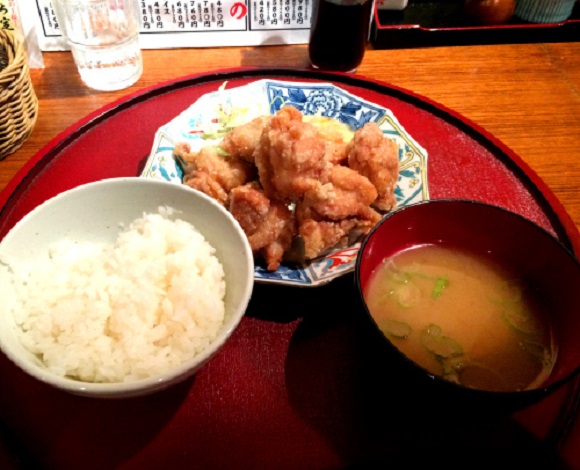
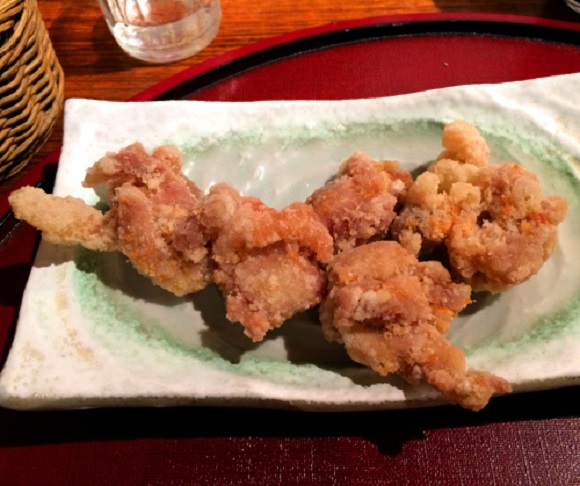

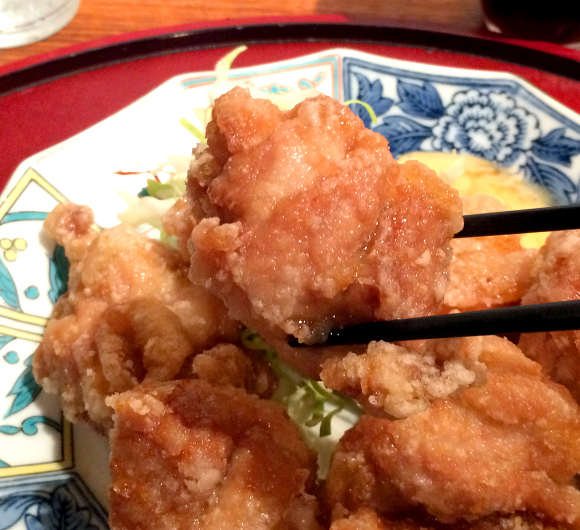
 At under a buck, Tokyo restaurant’s all-you-can-eat fried chicken is a ticket to poultry paradise
At under a buck, Tokyo restaurant’s all-you-can-eat fried chicken is a ticket to poultry paradise Tokyo’s awesome all-you-can-eat deals continue with unlimited fried chicken for under 10 bucks
Tokyo’s awesome all-you-can-eat deals continue with unlimited fried chicken for under 10 bucks All-you-can-eat fried chicken in one of Tokyo’s most fashionable neighborhoods for under 7 bucks
All-you-can-eat fried chicken in one of Tokyo’s most fashionable neighborhoods for under 7 bucks Tokyo restaurant’s all-you-can-eat curry, udon is under five bucks, comes with free fried chicken
Tokyo restaurant’s all-you-can-eat curry, udon is under five bucks, comes with free fried chicken Who needs fast food? Tokyo restaurant has awesome cutlet lunch sets for less than five bucks
Who needs fast food? Tokyo restaurant has awesome cutlet lunch sets for less than five bucks How to order snacks on a Shinkansen bullet train in Japan
How to order snacks on a Shinkansen bullet train in Japan New Nintendo Lego kit is a beautiful piece of moving pixel art of Mario and Yoshi【Photos】
New Nintendo Lego kit is a beautiful piece of moving pixel art of Mario and Yoshi【Photos】 Demon Slayer: Kimetsu no Yaiba gets new roller coaster attractions and food at Universal Studios Japan
Demon Slayer: Kimetsu no Yaiba gets new roller coaster attractions and food at Universal Studios Japan New samurai glasses are Japan’s latest weird must-have souvenir
New samurai glasses are Japan’s latest weird must-have souvenir Finally! Nintendo Japan expands Switch 8-bit controller sales to everybody, Online member or not
Finally! Nintendo Japan expands Switch 8-bit controller sales to everybody, Online member or not Apartment in Japan explodes following bizarre series of events【Video】
Apartment in Japan explodes following bizarre series of events【Video】 McDonald’s adds a new Cheese Bacon Potato Pie to its menu in Japan for a limited time
McDonald’s adds a new Cheese Bacon Potato Pie to its menu in Japan for a limited time Nintendo history you can feel – Super NES, N64, and GameCube controllers become capsule toys
Nintendo history you can feel – Super NES, N64, and GameCube controllers become capsule toys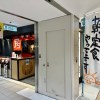 Tokyo Station’s perfect breakfast spot might just be this izakaya Japanese-style pub
Tokyo Station’s perfect breakfast spot might just be this izakaya Japanese-style pub High-fashion Totoro cuddle purse is like an elegant stroll in the forest【Photos】
High-fashion Totoro cuddle purse is like an elegant stroll in the forest【Photos】 Hello, cosmetics! Clinique teams up with Hello Kitty this summer for first-time collaboration
Hello, cosmetics! Clinique teams up with Hello Kitty this summer for first-time collaboration “The most Delicious Cup Noodle in history” – Japan’s French Cup Noodle wins our heart【Taste test】
“The most Delicious Cup Noodle in history” – Japan’s French Cup Noodle wins our heart【Taste test】 Starbucks releases a cute Frappuccino and Unicorn Cake…but not in Japan
Starbucks releases a cute Frappuccino and Unicorn Cake…but not in Japan Kyoto Tower mascot termination reveals dark side behind cute Japanese characters
Kyoto Tower mascot termination reveals dark side behind cute Japanese characters McDonald’s Japan’s Soft Twist Tower: A phantom ice cream only sold at select branches
McDonald’s Japan’s Soft Twist Tower: A phantom ice cream only sold at select branches Yabai Ramen: What makes this Japanese ramen so dangerous?
Yabai Ramen: What makes this Japanese ramen so dangerous? Japanese government wants to build luxury resorts in all national parks for foreign tourists
Japanese government wants to build luxury resorts in all national parks for foreign tourists To combat declining birth rate, Japan to begin offering “Breeding Visas” to foreigners
To combat declining birth rate, Japan to begin offering “Breeding Visas” to foreigners 10 things you should buy at 7-Eleven in Japan
10 things you should buy at 7-Eleven in Japan Studio Ghibli releases anime heroine cosplay dresses that are super comfy to wear
Studio Ghibli releases anime heroine cosplay dresses that are super comfy to wear Woman charged for driving suitcase without a license in Osaka
Woman charged for driving suitcase without a license in Osaka Studio Ghibli unveils My Neighbour Totoro miniature house model
Studio Ghibli unveils My Neighbour Totoro miniature house model Kyoto experiencing problems with foreign tourists not paying for bus fares, but not on purpose
Kyoto experiencing problems with foreign tourists not paying for bus fares, but not on purpose Fighting mild hunger with a Japanese soda that turns into jelly in the stomach【Taste test】
Fighting mild hunger with a Japanese soda that turns into jelly in the stomach【Taste test】 Studio Ghibli’s Howl’s Moving Castle tapestry unveiled in Japan for first time
Studio Ghibli’s Howl’s Moving Castle tapestry unveiled in Japan for first time McDonald’s new Happy Meals offer up cute and practical Sanrio lifestyle goods
McDonald’s new Happy Meals offer up cute and practical Sanrio lifestyle goods Sales of Japan’s most convenient train ticket/shopping payment cards suspended indefinitely
Sales of Japan’s most convenient train ticket/shopping payment cards suspended indefinitely Sold-out Studio Ghibli desktop humidifiers are back so Totoro can help you through the dry season
Sold-out Studio Ghibli desktop humidifiers are back so Totoro can help you through the dry season Japanese government to make first change to romanization spelling rules since the 1950s
Japanese government to make first change to romanization spelling rules since the 1950s Foreigner’s request for help in Tokyo makes us sad for the state of society
Foreigner’s request for help in Tokyo makes us sad for the state of society Ghibli founders Toshio Suzuki and Hayao Miyazaki contribute to Japanese whisky Totoro label design
Ghibli founders Toshio Suzuki and Hayao Miyazaki contribute to Japanese whisky Totoro label design Doraemon found buried at sea as scene from 1993 anime becomes real life【Photos】
Doraemon found buried at sea as scene from 1993 anime becomes real life【Photos】 Tokyo’s most famous Starbucks is closed
Tokyo’s most famous Starbucks is closed Princesses, fruits, and blacksmiths: Study reveals the 30 most unusual family names in Japan
Princesses, fruits, and blacksmiths: Study reveals the 30 most unusual family names in Japan Move over, Double Down! KFC has a crazy new way to deliver chicken in the form of the Chizza
Move over, Double Down! KFC has a crazy new way to deliver chicken in the form of the Chizza Late-night all-you-can-eat yakiniku for only 980 yen? Yes, please!
Late-night all-you-can-eat yakiniku for only 980 yen? Yes, please! We eat a luxurious Japanese-style buffet breakfast in a restaurant full of wood-carved bears
We eat a luxurious Japanese-style buffet breakfast in a restaurant full of wood-carved bears We eat green fried chicken that looks like broccoli from a Shibuya chicken shop【Taste test】
We eat green fried chicken that looks like broccoli from a Shibuya chicken shop【Taste test】 Tokyo restaurant offers “DIY Tempura Bowls,” so of course we had to go check it out
Tokyo restaurant offers “DIY Tempura Bowls,” so of course we had to go check it out Tasty and cheap: 30 minutes of all-you-can-eat yakiniku for only 780 yen
Tasty and cheap: 30 minutes of all-you-can-eat yakiniku for only 780 yen Free fried chicken for using free Wi-Fi?!? Tokyo restaurant offers irresistible karaage freebie
Free fried chicken for using free Wi-Fi?!? Tokyo restaurant offers irresistible karaage freebie Japan’s new bento has people talking and hearts burning because it’s all fried chicken skins
Japan’s new bento has people talking and hearts burning because it’s all fried chicken skins There’s a permanent all-you-can-eat, all-you-can-drink KFC restaurant opening in Tokyo
There’s a permanent all-you-can-eat, all-you-can-drink KFC restaurant opening in Tokyo Yoshinoya has a semi-secret chicken bowl you won’t find anywhere on its website【Taste test】
Yoshinoya has a semi-secret chicken bowl you won’t find anywhere on its website【Taste test】 Nagoya serves up fried chicken with sweet beans, whipped cream, and a strawberry on top
Nagoya serves up fried chicken with sweet beans, whipped cream, and a strawberry on top Nitori opens its first-ever restaurant in Japan
Nitori opens its first-ever restaurant in Japan Mr. Sato attempts to conquer mountains of shaved ice at all-you-can-eat event
Mr. Sato attempts to conquer mountains of shaved ice at all-you-can-eat event Kentucky Fried Chicken installs fried chicken pick-up lockers in Tokyo, two other cities【Video】
Kentucky Fried Chicken installs fried chicken pick-up lockers in Tokyo, two other cities【Video】 New burger in Japan combines fried chicken with…strawberries and cream?!?
New burger in Japan combines fried chicken with…strawberries and cream?!?
Leave a Reply